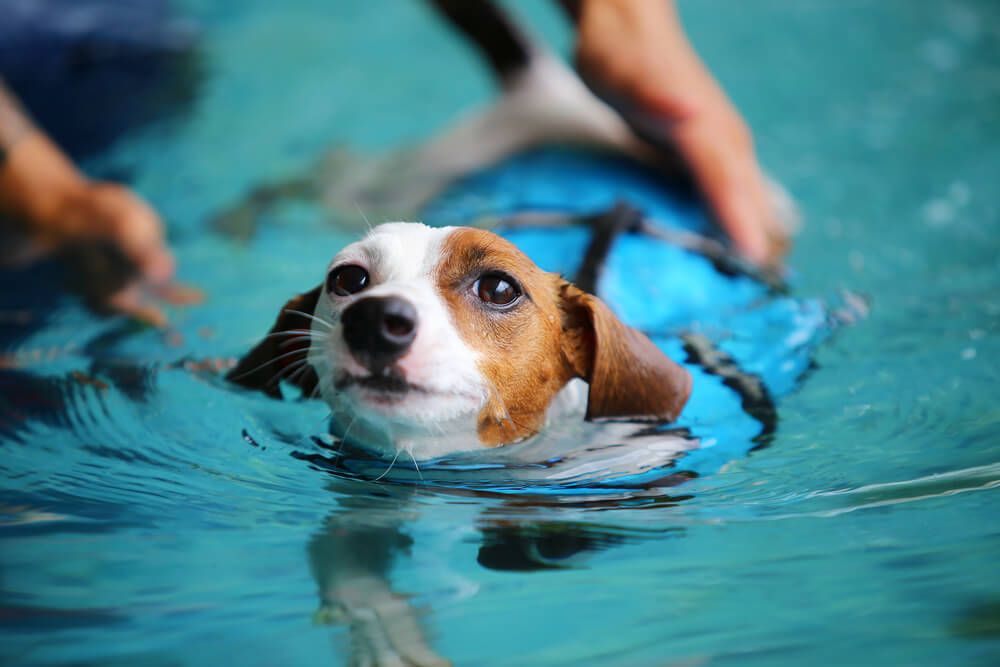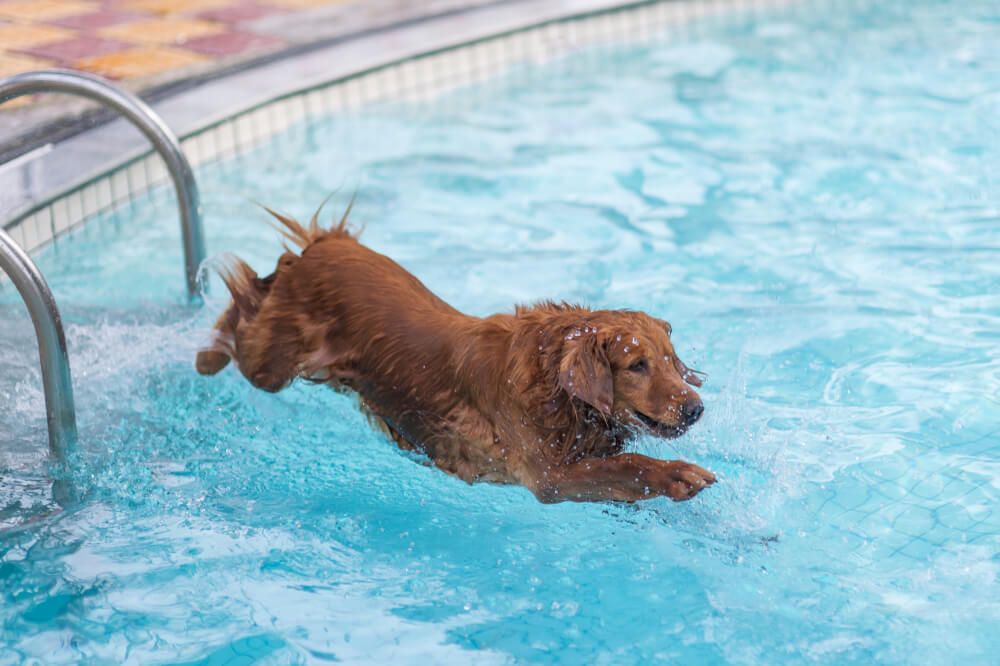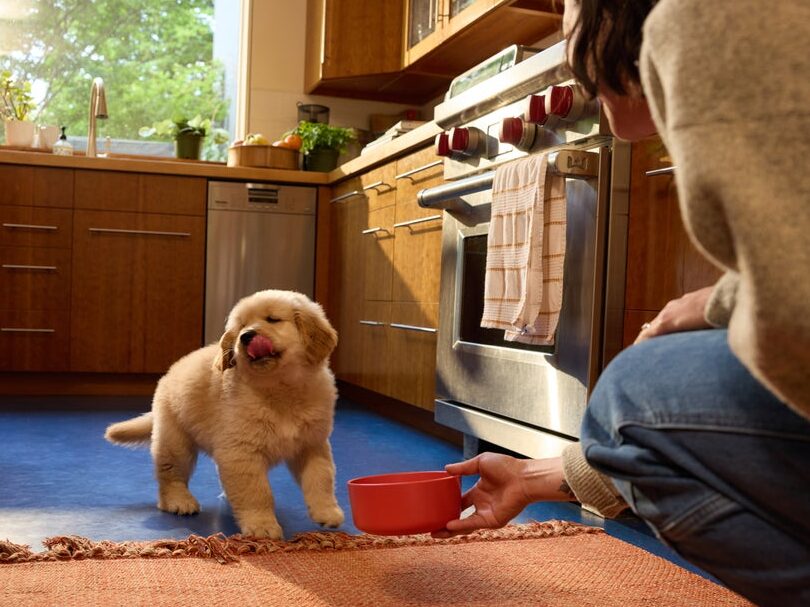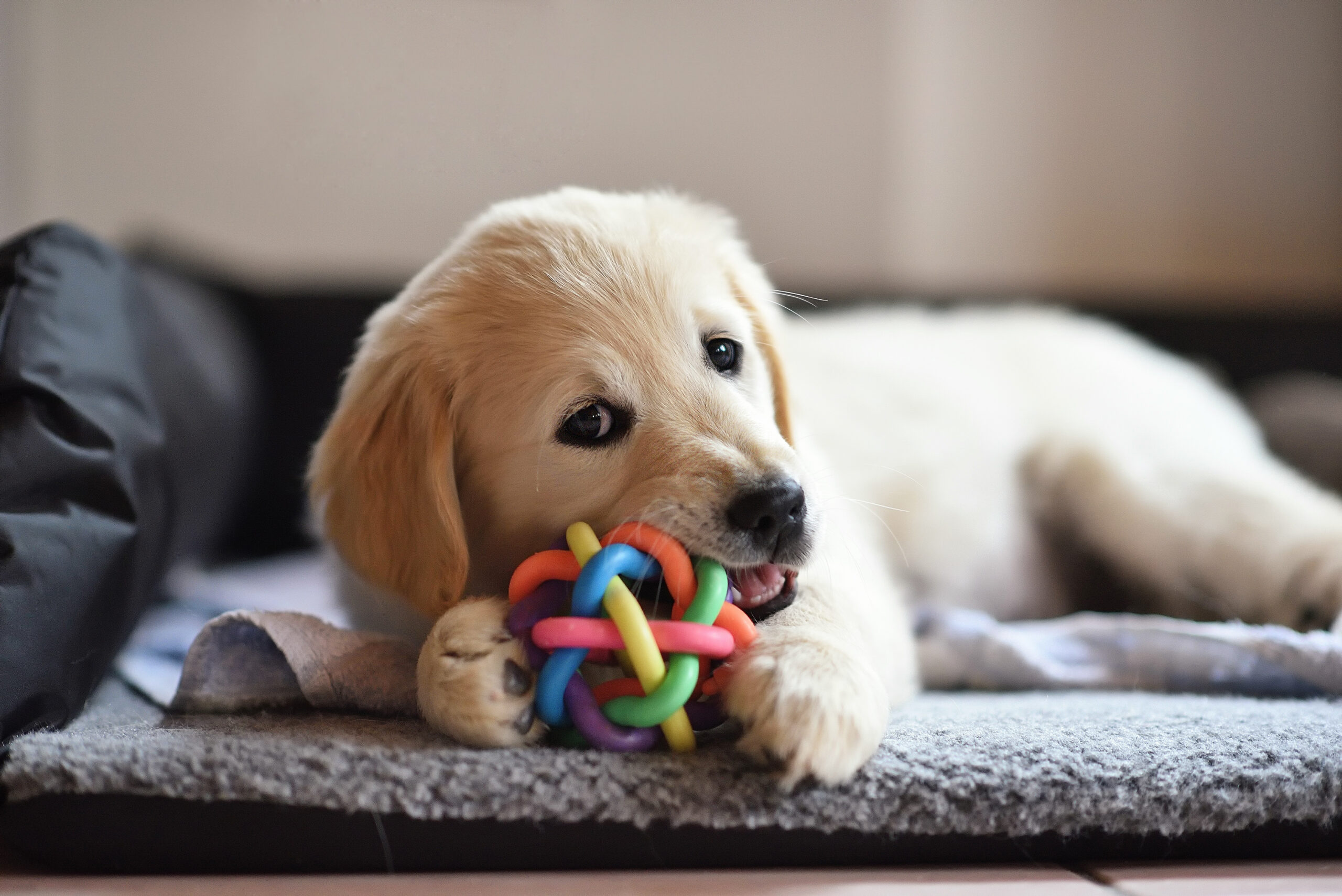Hey Ollie blog readers! We’re offering you an exclusive 60% OFF your starter box! Try now!
For many people, summer fun means pools, beaches, hiking through creeks, and even spending time on a boat. But what about your pup? If you’re contemplating having them join you we put together some of our best tips for helping your pup to love the water and keeping them safe.
5 Steps to Introduce your Dog to Water

1. Start slowly
Introduce your dog to water slowly and use rewards. While you might not want to use a lot of food rewards while your dog is swimming, you can use tons of praise and even the chance to play with a favorite toy. Choose a calm or smaller body of water as your pup’s first exposure. If you are using a large pool made for people, the first thing you want to do is show your pup how to get into and out of the water.
2. Use a dog safe kiddie pool
A dog safe kiddie pool, or one designed specifically for dogs can make introducing your dog to the water easier. As a bonus, you can fill this smaller pool anytime your pup wants to cool off. Some of the pet pools even collapse for easy transport so if you are headed out with friends or to a park that has hoses, you might even be able to bring the pool with you.
3. Bring an experienced friend
Dogs often learn from watching what other dogs do. If you are teaching your dog to swim, or even hike through areas with creeks, having an older, experienced friend along can help. Dogs often copy what they see other pups do, so if your dog sees another dog calmly walking through the water or swimming with confidence, your dog might try the same. Remember to give your pup plenty of praise and reassurance as they adjust to the new textures and even the change in temperature from the warm air to the cool water.
4. Get a life jacket if needed
For activities like boating where you will be out in deep water, or even a human swimming pool consider a life jacket. Some dogs are naturally better suited for swimming but the extra buoyancy can be helpful – especially in open water.
5. Try different activities in or around water
If your pup isn’t too keen on swimming, don’t be afraid to try hiking or boating or another water activity. Just because your pup doesn’t like one doesn’t necessarily rule out the others. Also, remember to have patience as it can take a few exposures to a new activity for your dog to really feel comfortable. Conversely, after trying a few times you might find that although your dog is participating they aren’t really enjoying the activity. Watch for body language like excitement and playfulness as much as fear and avoidance. If you’re not sure what to look for, chat with your vet or trainer.
5 Water Safety Tips for Dogs
1. Teach cues for okay to enter the water and water time is over
For pups who love to swim this one is going to be important. If your pup sees water and just goes for it before waiting for your okay, you risk running into a few issues. The first is your pup could unintentionally enter unsafe water. Whether its the ocean with a risk of ripcurrents, a lake with some kind of algae or bacteria that makes it unsuitable for swimming, a hot tub,or a pool with chemical treatment still running you don’t want your dog to go running for the water before you’ve determined it’s safe for them to enter. Second, this can help keep your pup out of the water until proper supervision is available.
When its time to wrap up swimming, you want to have a cue for your pup that means all done. Some pups will swim until the point of exhaustion if allowed unlimited access to the water. This can become dangerous quickly – if your pup is too exhausted to continue and too far out in the water. So, keep a close eye on your pup and remind them to take breaks as needed. You also want to use this cue to wrap them up so they know water time is really over and they need to take a rest.
2. Never allow your dog to be near water unsupervised
Even if your dog is a confident and experienced swimmer, you should not have your dog around water unsupervised. Just like with children it only takes a minute to have an accident. Falling into a pool can be disorienting for a pup and they might not be able to figure out where they are or how to get out of the water. If you have a pool or are visiting somewhere that does, don’t just let your pup outside without a careful eye on them.
3. Don’t allow your dog to drink saltwater (or chlorine)
When swimming in the ocean or even a pool, the salt or chlorine in the water isn’t good for your dog to drink. Hopefully they will be put off by the taste, but if not, its still important to discourage drinking this water as it can cause upset stomach, vomiting and diarrhea. In some cases too much saltwater can actually be fatal, so if you are concerned, contact your vet. Its always better to be safe than sorry.
4. Do research before heading into any body of water
Not all water is safe for dogs to swim in, so it is important to do your research before heading out for a day in the water with your dog. Some lakes and ponds may contain blue green algae which is actually bacteria known as cyanobacteria. The bacteria is not able to be seen with the naked eye. But, you may see clumps that resemble a blue green algae. This type of bacteria can be found in freshwater ponds as well as backyard water structures that are not properly cleaned or maintained. If you think your dog has come in contact with a toxin like this, contact your vet ASAP for further instructions.
5. Learn pet First Aid
The American Red Cross offers a course in pet first aid. If you plan to take your dog swimming or near water, it might be a good idea to take this class first.
What to do if your dog hates the water
So, you’ve tried introducing your pup to water slowly and they haven’t warmed up to it at all. That’s okay! Some pups just aren’t interested in aquatic activities. If your pup has no interest in spending time in the water, you still have options.
Will you pup lounge poolside? If they like to be by the pool and not in on the action, consider getting them some shade, like an umbrella or portable cabana, and ensuring they have some cool, fresh water – to drink, not swim in!
Can your pup relax on the sand while others go in the ocean? Great! If not, consider leaving your dog at home or with a trusted sitter. The same goes for pups who show signs of stress or anxiety on the boat or around other water activities. Just leave them home if they have shown you that they don’t want to participate.
The Ollie blog is devoted to helping pet parents lead healthier lives with their pups. If you want to learn more about our fresh, human-grade food, check out MyOllie.com.
Tagged As:

The nutrition your dog needs,
the food they want.

Enjoying our articles? Subscribe our Newsletters and get new articles directly to your inbox
You might also like
13 May 2025
8 MINS READ
Puppy Training Guide & Behavior Timeline
Bringing home a puppy is pure magic. It’s also pure chaos—tiny teeth, zoomies, accidents in the house, and moments that make you wonder if you’re raising a future genius or a tiny tornado. …
by Ollie Pets
10 May 2025
12 MINS READ
New Puppy Checklist: Guide To Prepare For A New Dog
Bringing home a new puppy? This checklist covers everything new dog owners need—from essential supplies to training, feeding, and first vet visits.
by Ollie Pets
3 April 2025
9 MINS READ
Home Remedies for Fleas on Dogs: 10 Natural Ways That Actually Work
Wondering what kills fleas on dogs instantly and naturally? If your pup is scratching like crazy, it may be time to take action. In this guide, we’ll show you the most effective home remedies for…







